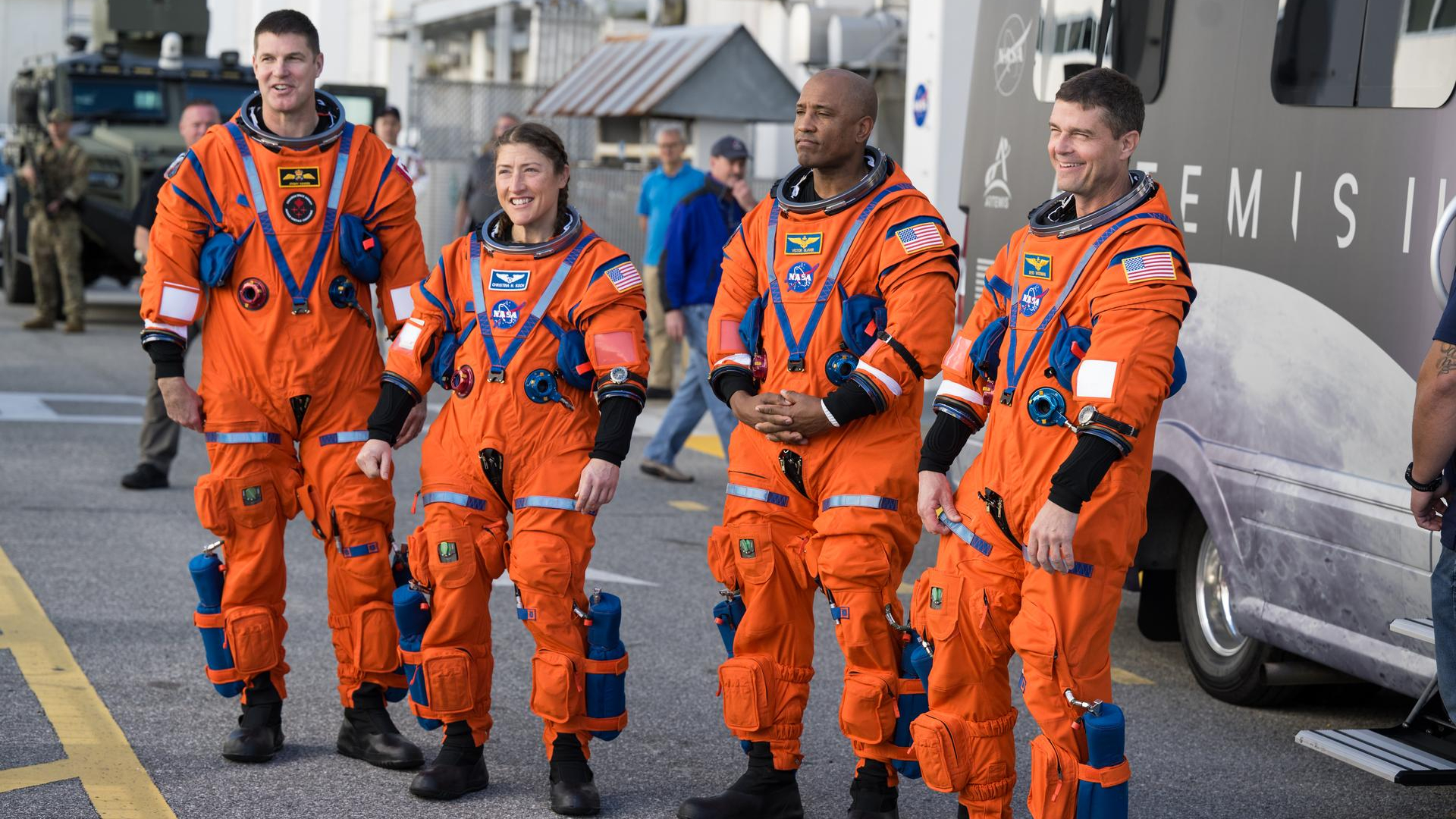Lofty Launch Goals Set for 2008
CAPE CANAVERAL - The comingyear is going to be a full one on Florida's Space Coast.
There will be aconstruction boom that will triple the size of the International Space Station.
Then there are the missionsto Mercury, the moon and Mars.
There will be 16 rocketlaunches.
In addition, there will bea half-dozen NASA shuttle flights, including a fifth and final servicing callon the Hubble Space
Telescope.
If all the scheduled shuttlelaunches occur this year, they would be at a rate not seen since before the 2003 Columbia accident.
"We have an ambitiousgoal ahead of us," NASA shuttle program manager Wayne Hale said. "ButI believe it's achievable."
Breaking space news, the latest updates on rocket launches, skywatching events and more!
Here are five big spacestories to be looking for in 2008:
NASA bound for planetaryencounters
NASA's Messengerspacecraft will make the first flyby of Mercury in more than 30 years onJan. 14, cruising within 125 miles of the planet's surface. It will be thefirst of three close passes the spacecraft will make before dropping into orbitaround the planet in 2011.
NASA's Phoenix lander isslated to touch down on Mars in late May, and the Lunar Reconnaissance Orbiter-- a spacecraft that will search for suitable moon base sites -- will blast offin late October.
Hubble huggers head forflagship observatory
Seven astronauts willlaunch in August on a mission to outfit the Hubble telescope with new scienceinstruments and equipment that will keep the 17-year-old observatory operatingthrough 2013.
It might be the finalflight of Atlantis, although NASA is considering an option to keep the orbiterflying until the shuttle program ends in 2010.
Endeavour at the same timewill be poised to launch a rescue mission should an emergency crop up during theHubble flight.
The observatory is in adifferent orbit than the space station, so the astronauts would not be able toseek safe haven there if their spaceship suffers serious damage.
2008 presidentialelection
President Bush in 2004directed NASA to finish the station and retire its shuttle fleet in 2010, fielda new spaceship by 2014 and send U.S. astronauts back to the moon by 2020.
A new administration willtake office in January 2009, and NASA may or may not get new marching orders.
Next month, the Republicanand Democratic parties both will hold presidential primaries in Florida. Localpolitical leaders are pressing the candidates to detail theirplans for NASA.
"The only candidatewith any kind of substantial space policy on their Web site is Hillary"Rodham Clinton, said U.S. Rep. Dave Weldon (R-Fla.)
The Clinton policy callsfor NASA to complete the station and speed development of the Ares 1 rocketsand Orion spacecraft that will replace the shuttle. It also says Clinton"will not allow a repeat of the 'brain drain' that occurred between theApollo and shuttle missions."
Weldon said Republicancandidates should address the issues, which are critical to many voters at theeast end of the politically important Interstate 4 corridor.
"They need to wake upand smell the coffee," Weldon said.
Hear the rockets roar
United Launch Allianceplans 16 Atlas and Delta rocket launches at Cape Canaveral Air Force Stationnext year. Six Delta 2 rockets, four Delta 4 rockets and six Atlas 5 rocketsare to be sent aloft.
SpaceX, a newcomer fromCalifornia, also plans debut launchesfrom Launch Complex 40, a former Titan pad.
Founded by Internetentrepreneur Elon Musk, the company is planning two demonstration flights ofits Falcon 9 rocket in late 2008.
The company aims to proveit can provide safe and reliable commercial freight and crew transport servicesto the station after the shuttle fleet is retired.
The grand stationexpansion plan
NASA is planning five stationassembly flights, missions aimed at delivering European and Japanesescience labs and at completing its central truss.
Spacewalking repairs on afouled-up solar wing rotary joint will be required to produce enoughelectricity for the labs, and the station will be stocked so crews can be expandedfrom three to six in 2009.
"I would tell you thatnext year is largely about bringing our international partners to orbitfinally," said NASA station program manager Mike Suffredini. "And thenext phase is to get ourselves ready for a six-person crew."
The United States andRussia linked the first two station building blocks in late 1998, and the $100billion outpost now is about 60 percent complete.
If all goes well, NASAwould have a real chance to complete construction of the station -- a projectthat involves 100,000 people from 15 nations on four continents -- as scheduledin 2010.
NASA space operations chiefBill Gerstenmaier said, "It's going to be a great time for the spacestation."
- Top 10 Spaceflight Stories of 2007
- SPACE.com Video Interplayer: NASA's STS-122: Columbus Sets Sail for ISS
- VIDEO: ISS Commander Peggy Whitson Takes Charge
Published under licensefrom FLORIDA TODAY. Copyright: 2007 FLORIDA TODAY. No portion of this materialmay be reproduced in any way without the written consent of FLORIDA TODAY.
Todd Halvoron is a veteran aerospace journalist based in Titusville, Florida who covered NASA and the U.S. space program for 27 years with Florida Today. His coverage for Florida Today also appeared in USA Today, Space.com and 80 other newspapers across the United States. Todd earned a bachelor's degree in English literature, journalism and fiction from the University of Cincinnati and also served as Florida Today's Kennedy Space Center Bureau Chief during his tenure at Florida Today. Halvorson has been an independent aerospace journalist since 2013.
